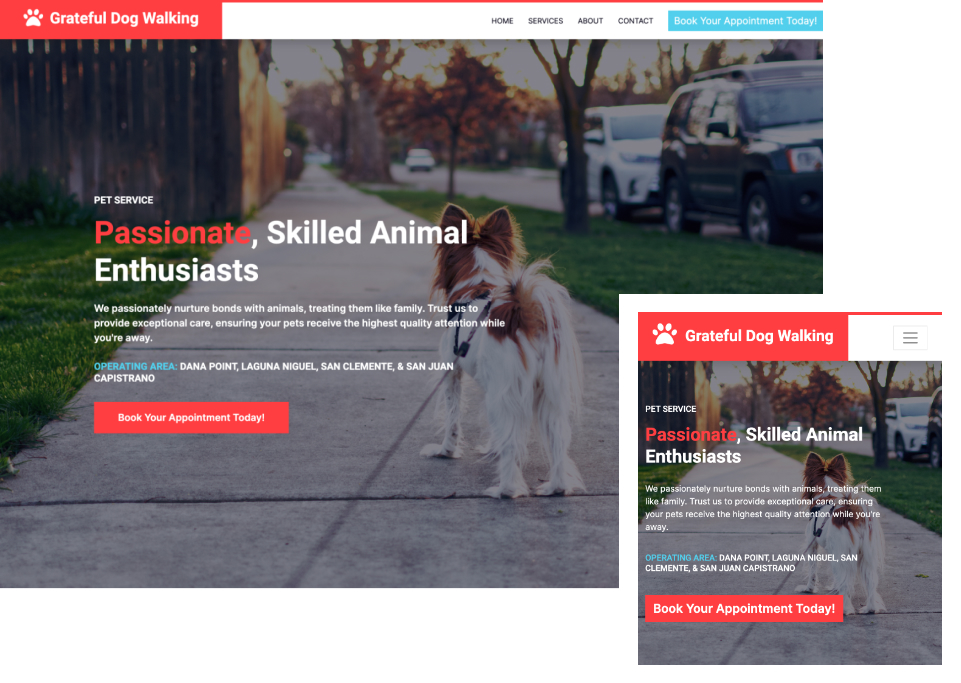Enhanced User Experience:
The user-centered design approach resulted in a website that addressed the specific needs and preferences of pet owners, providing an intuitive and enjoyable experience throughout the dog walking service journey.
Established Trust and Credibility:
Transparent pricing, clear communication channels, and dog walker profiles with background information and reviews helped build trust and credibility among users, leading to increased conversions and customer retention.
Streamlined Booking Process:
The redesigned website simplified the process of booking dog walks, offering flexibility in scheduling, clear service options, and easy-to-use forms. This resulted in an efficient and frustration-free experience for pet owners.











